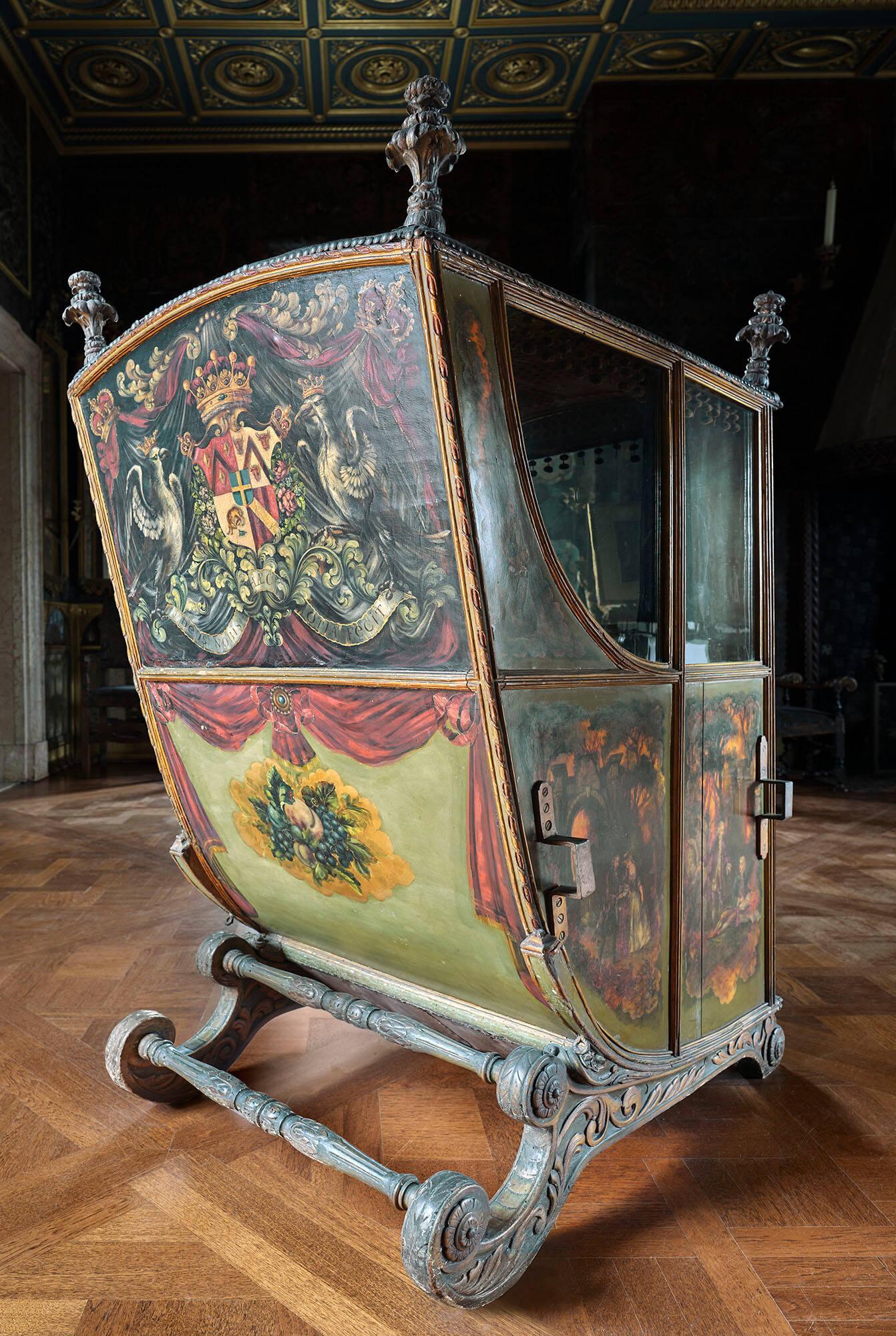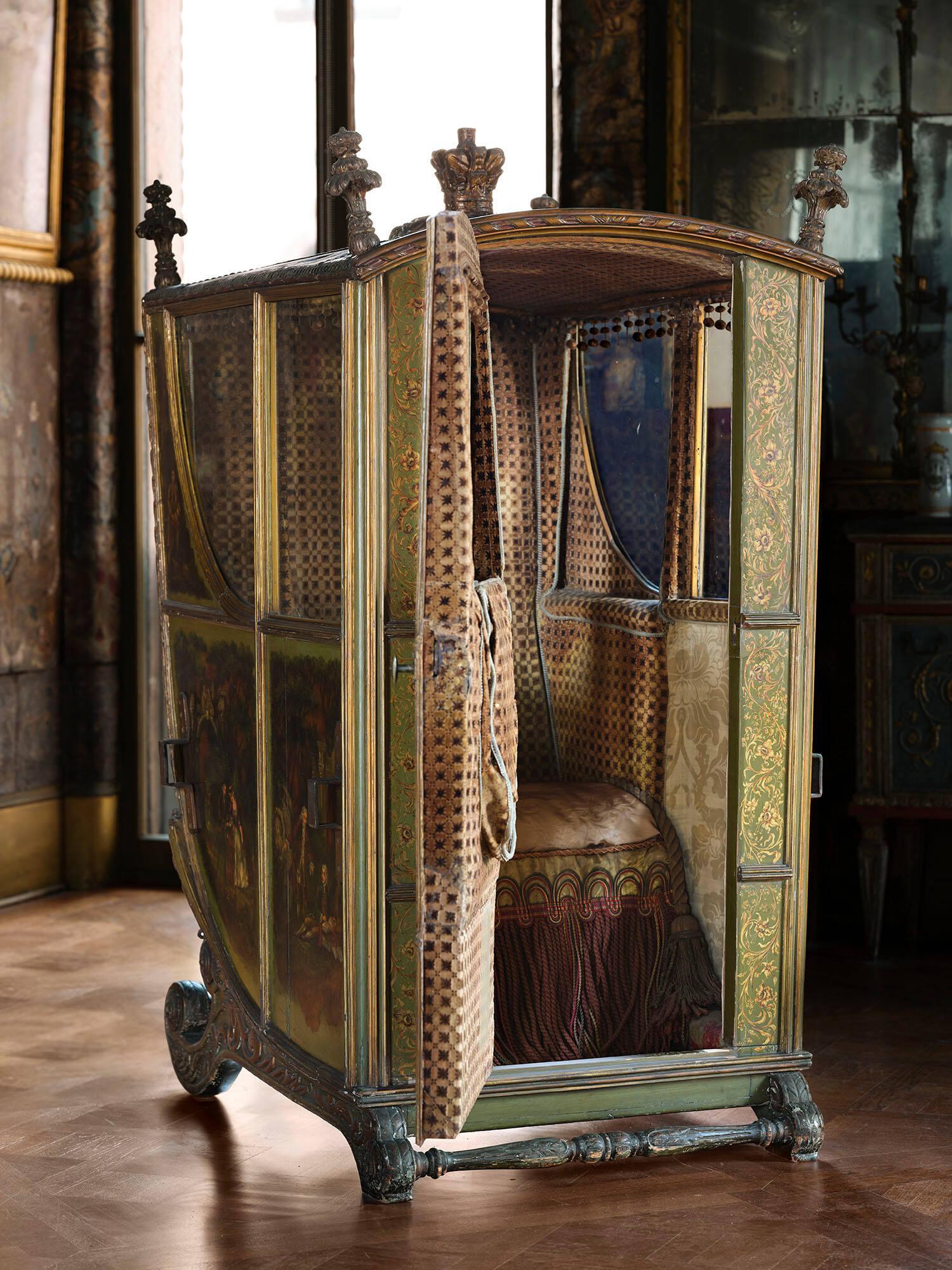General admission for children 17 years and under is always free
Isabella Stewart Gardner’s museum is so dense and saturated with interesting objects that not everything displayed gets to show off all of its fascinating details. Inscriptions on bottoms of artworks, the parts of furniture covered by textiles, and the sides of many objects blocked from view by walls or other acquisitions are just some of the parts of the collection you can't see by just walking through the galleries. Though the unchanging nature of the gallery means objects cannot be adjusted to reveal their secrets, these unseen sides of the collection are nonetheless examined and photographed—and they deserve their time in the spotlight.
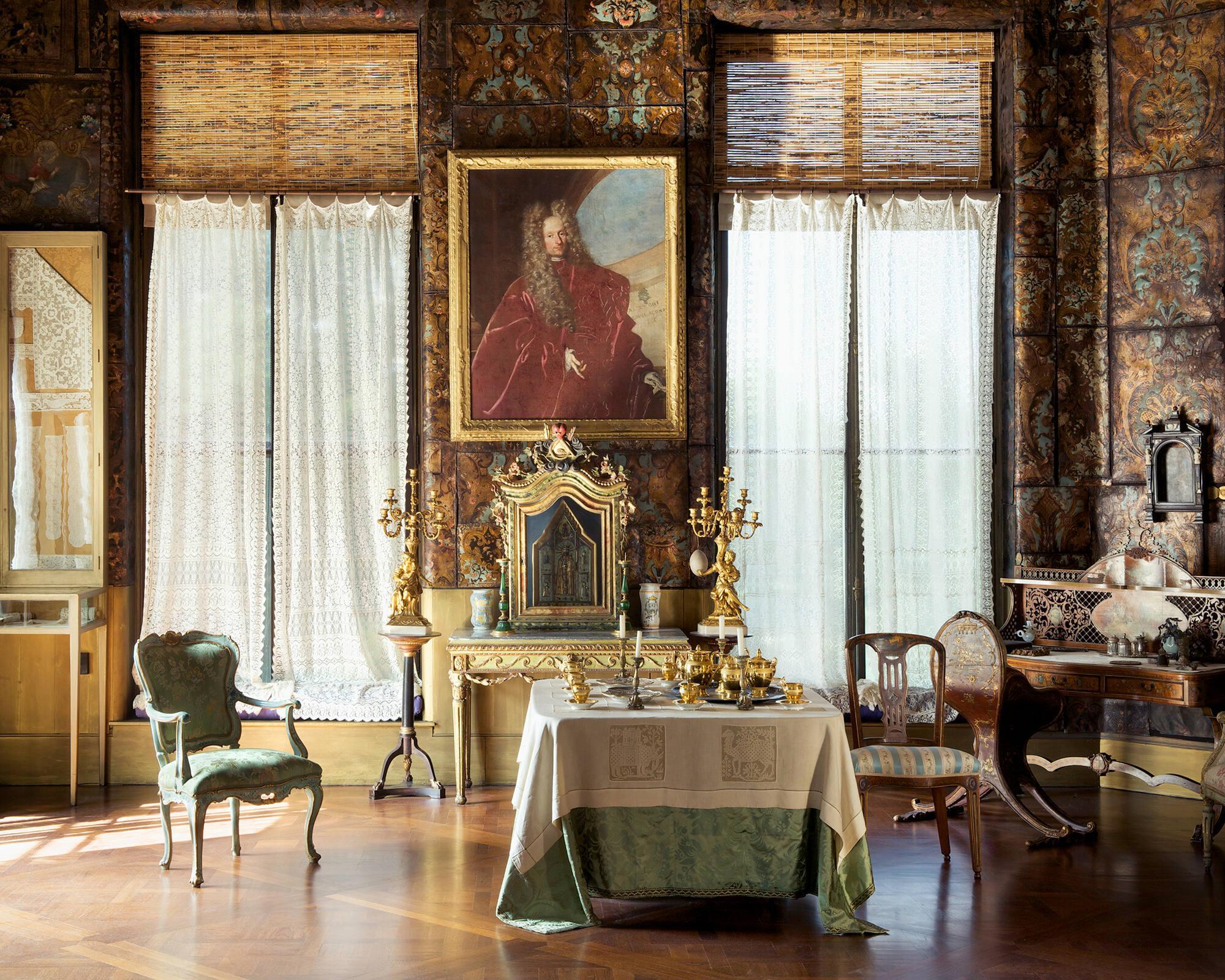
Photo: Sean Dungan
Sedan Chair in the Veronese Room
Between the east and south walls of the Veronese Room sits a lavish sedan chair. In 17th and 18th century Europe, predominantly in English cities, members of the gentry used sedan chairs for transportation. Dressed in expensive clothing, aristocrats wanted to avoid getting dirty from walking through the streets. Their solution was to travel in a sedan chair, which would be mounted on two poles and carried by servants, one at the front and one at the rear. Isabella purchased this particularly ornate sedan chair from an art dealer in Boston. Known for her love of horticulture and gardens, perhaps she was drawn to the lush garden scenes with figures wearing 18th century dress depicted on the chair.
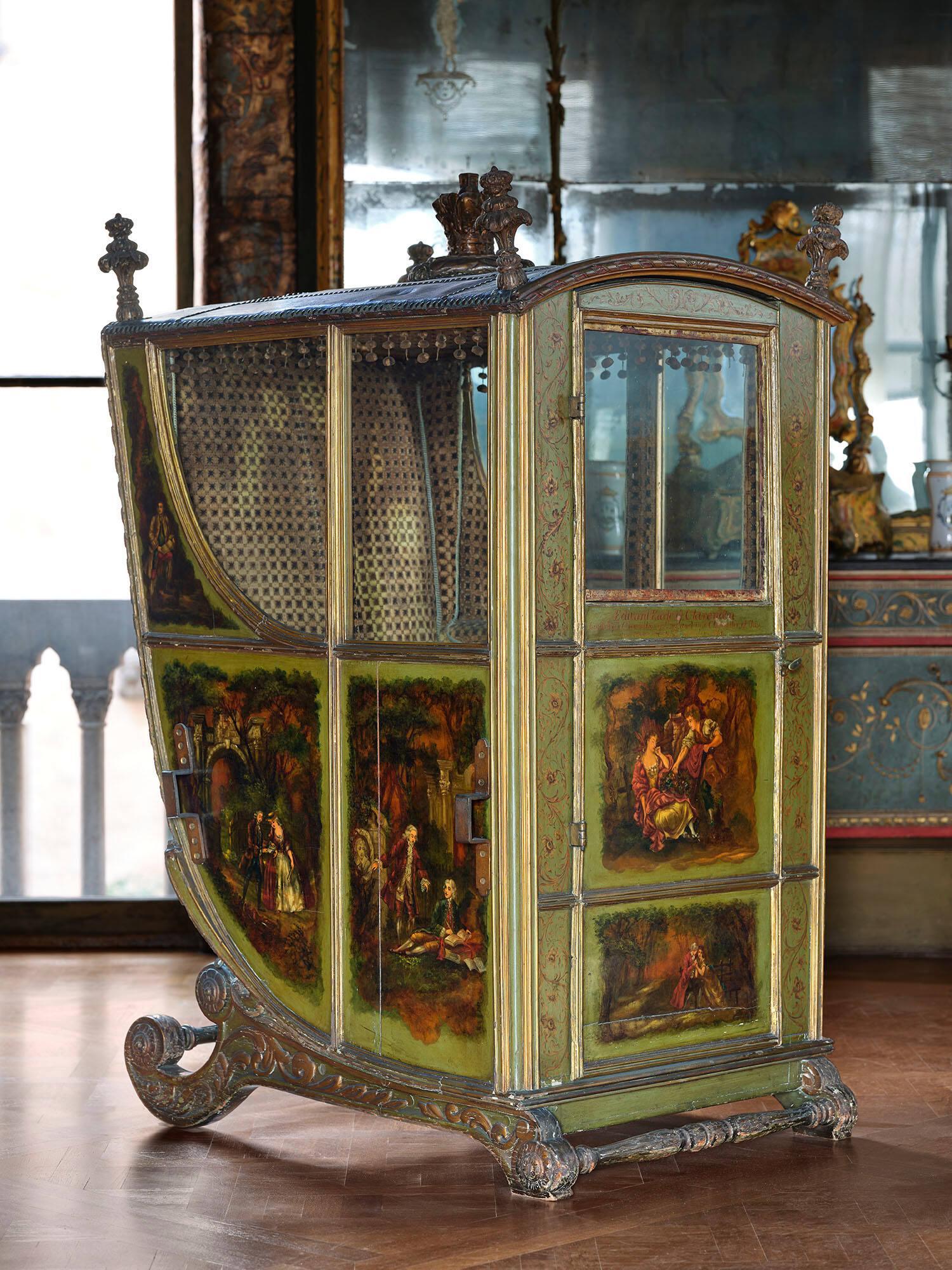
Isabella Stewart Gardner Museum, Boston (F25c24). See it in the Veronese Room.
Italian, Northern Italy, Sedan Chair, about 1770–1785. Painted wood; leather, 151.1 x 83.2 x 102.9 cm (59 1/2 x 32 3/4 x 40 1/2 in.)
Though visitors are able to see three of the four sides of the chair from beyond the rope sectioning off the east and south walls, the backside of the chair remains hidden from public view. The painting hidden on the far side is unlike the others. It features a coat of arms, flanked on both sides by crown-wearing birds perched atop sprawling greenery and holding a ribbon adorned with text. The luxurious interior, covered on all sides by lavish fabrics, is also hidden from view. Taking a look inside, we can see the cushion adorned with numerous tassels where the aristocratic passenger would sit, protected from the elements.
Chest for Laces (Cofano) in the Titian Room
On the south wall of the Titian Room is a rather unassuming chest that could be easily missed when viewed alongside the luxurious items that surround it. Originally, this chest was intended to store laces and other delicate textiles. [Read more about Isabella’s lace collection on the blog.] On initial observation, one might assume that it is simply opened from the top and features a deep bottom. The truth is far more interesting.
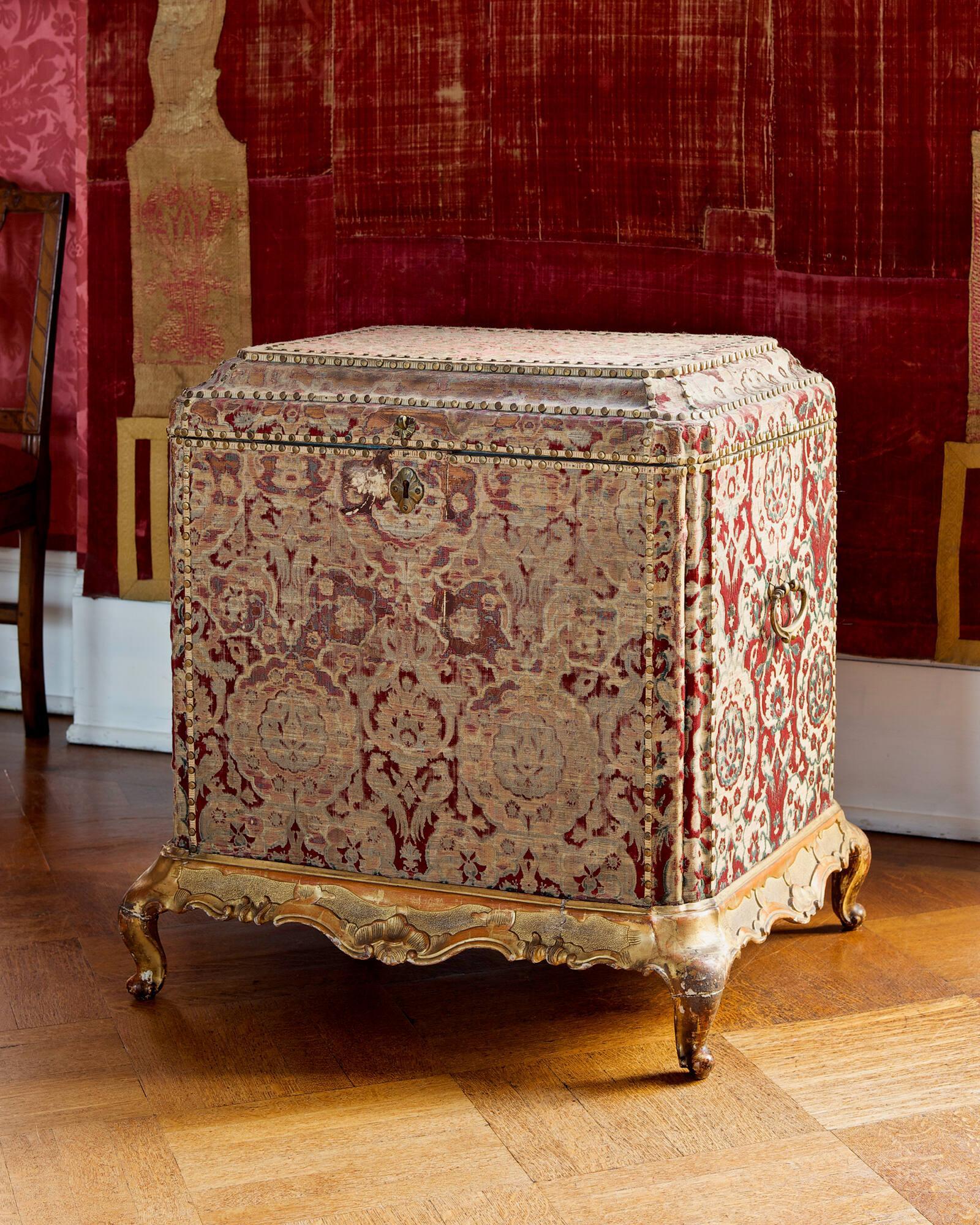
Isabella Stewart Gardner Museum, Boston (F26s6). See it in the Titian Room.
Italian, Chest for Laces (Cofano), 18th century. Chest: wood, silk velvet, silk with tuffs, bronze fittings; Base: gilded cirmolo, 28 7/8 x 26 1/8 x 19 5/16 in. (73.3 x 66.4 x 49 cm)
The chest must be removed from the base in order to be fully opened, making the process of seeing this object in its full glory surprisingly difficult, but also making the opportunity to see the interior even more exciting. The chest opens in two parts: a fall front and a hinged top. The interior is lined with white silk and small blue tufts, making a soft surface for delicate textiles to rest upon. Below the top tray are two sliding shelves. The front of the tray, as well as the interior of the fall front, are adorned with blue vines and flowers. On the inner side of the chest’s frame is an inscription that reads “Parte Davanti,” or “front part” in Italian.
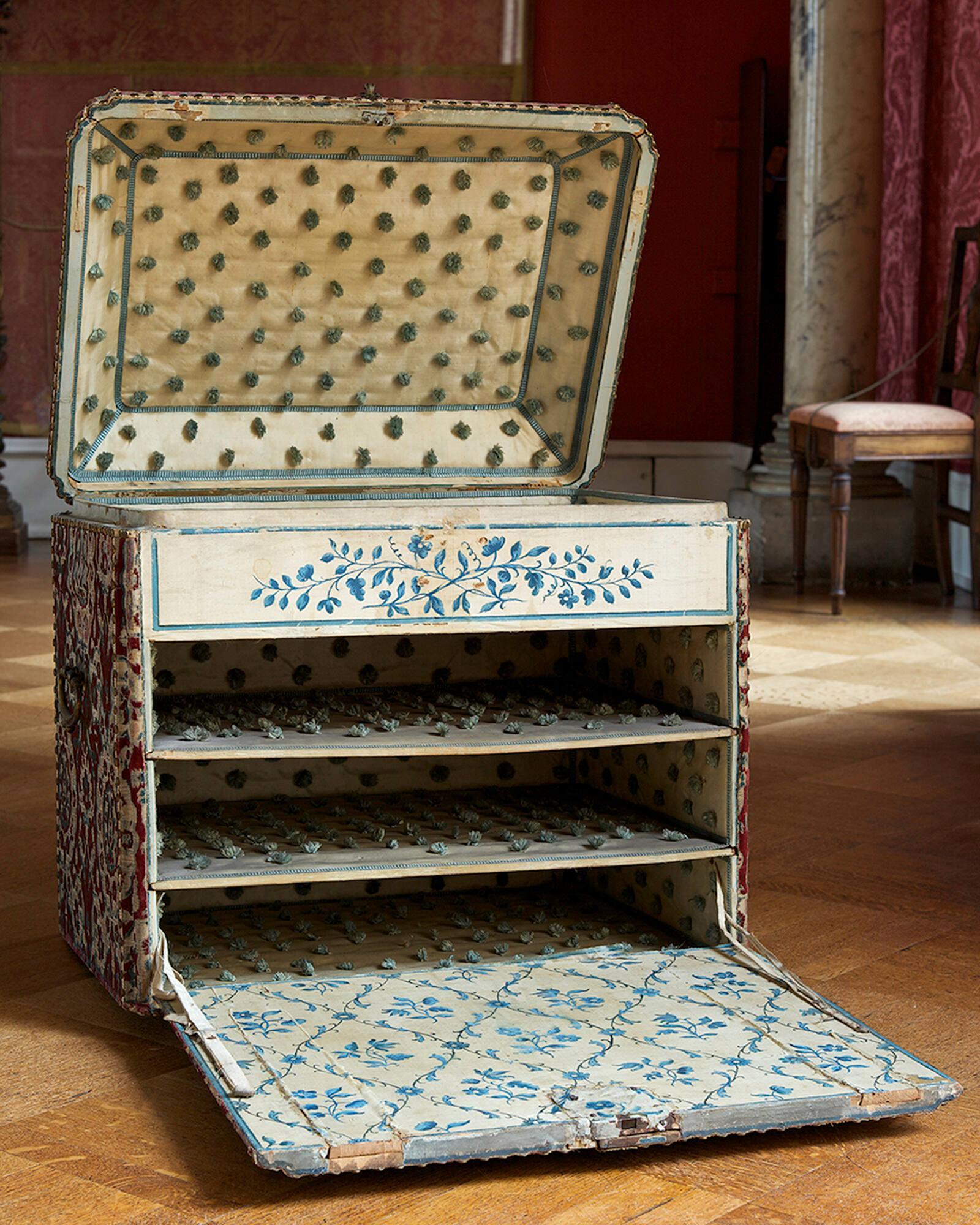
Isabella Stewart Gardner Museum, Boston (F26s6). See it in the Titian Room.
Italian, Chest for Laces (Cofano), 18th century. Chest: wood, silk velvet, silk with tuffs, bronze fittings; Base: gilded cirmolo, 28 7/8 x 26 1/8 x 19 5/16 in. (73.3 x 66.4 x 49 cm)
Writing Desk (Scrivania) in the Blue Room
Upon entering the Blue Room, the desk placed next to the east wall entrance might not catch your attention. Surrounded by various furnishings and paintings by famous artists contemporary to Isabella’s time, it’s easy for the desk to fade into the background. This unassuming desk, however, has a fascinating secret.
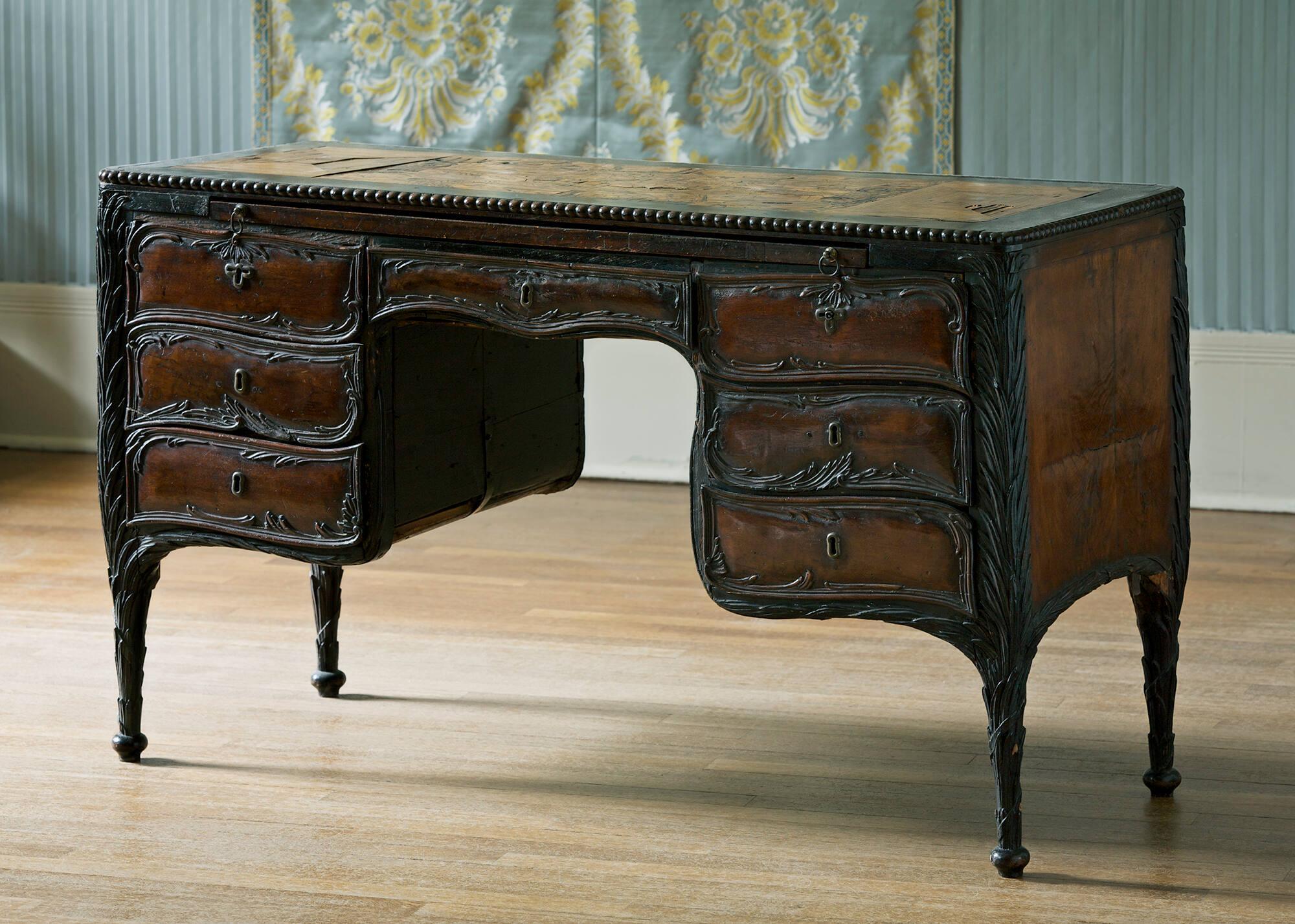
Isabella Stewart Gardner Museum, Boston (F3e10). See it in the Blue Room.
Italian, Writing Desk (Scrivania), end of the 18th century. Walnut and pine; inlaid panels: cherry, yew, ash, jujube, fir, and mulberry, 74.3 x 128.5 x 50 cm (29 1/4 x 50 9/16 x 19 11/16 in.)
Below the various objects displayed upon its top are gorgeous wooden intarsia inlay panels. This inlaid desktop is made up of three panels, which are considerably older than the desk itself. The panels were likely originally constructed to be the front and sides of a writing cabinet. The rest of the desk was created at a later point, probably to specifically showcase these panels, recovered from another, older object. While the bottom section of the desk is built from walnut and pine, the top panels incorporate cherry, yew, ash, jujube, fir and mulberry, creating a colorful adornment of various woods. The center panel features a man on horseback in front of an intricate cityscape. Surrounding him are various objects that were considered symbols of noble pursuits during the 17th century, such as weapons, cards, books, and musical instruments.
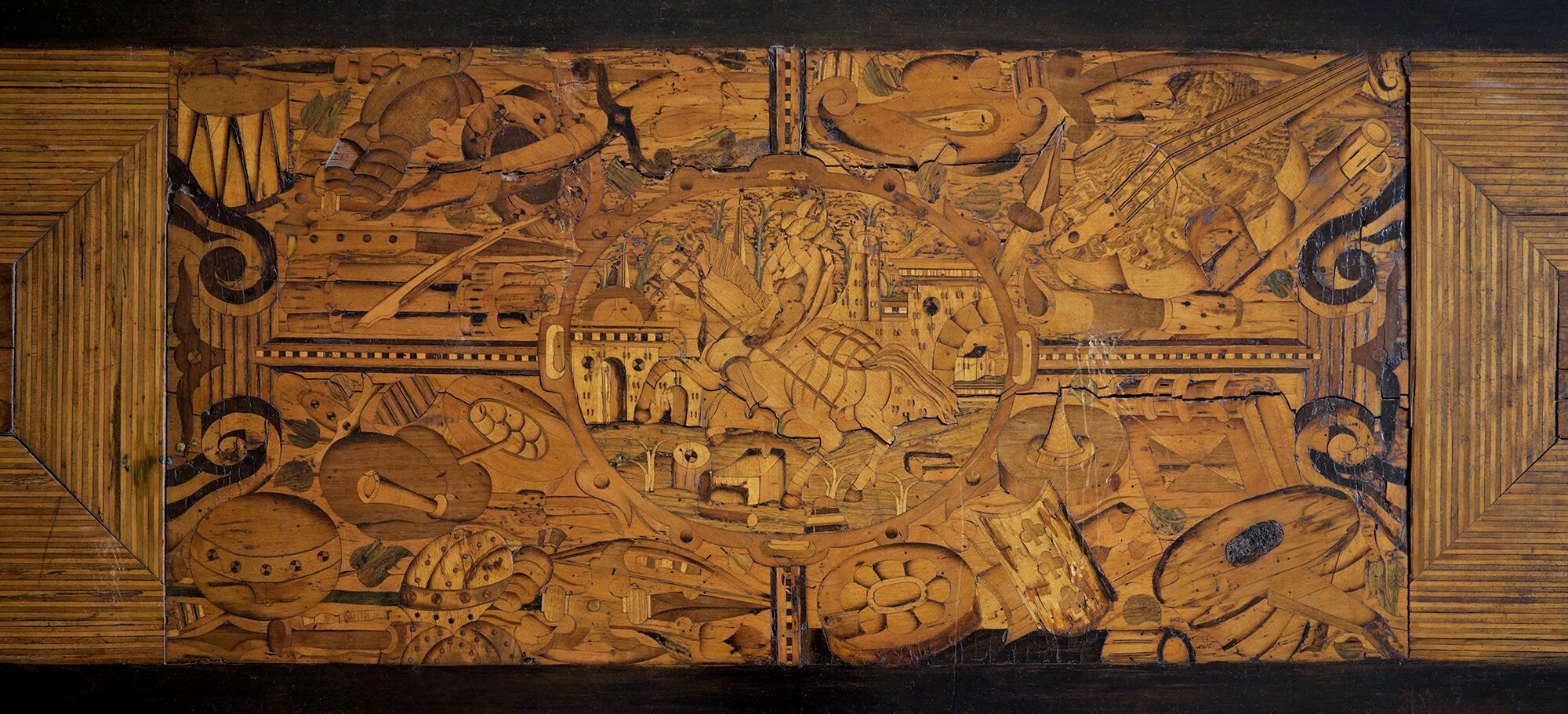
Isabella Stewart Gardner Museum, Boston (F3e10). See it in the Blue Room.
Italian, Writing Desk (Scrivania), end of the 18th century. Walnut and pine; inlaid panels: cherry, yew, ash, jujube, fir, and mulberry, 74.3 x 128.5 x 50 cm (29 1/4 x 50 9/16 x 19 11/16 in.)
Next time you’re visiting the Galleries, take the time to consider both what you see and what secrets the collection has yet to reveal. Isabella wove all sorts of mysteries into her museum. Every walk around the Palace offers a chance to notice something new—and when those new things are not immediately visible to visitors, we do our best to make them available through the online collection and bring them to you in blog posts like this!
